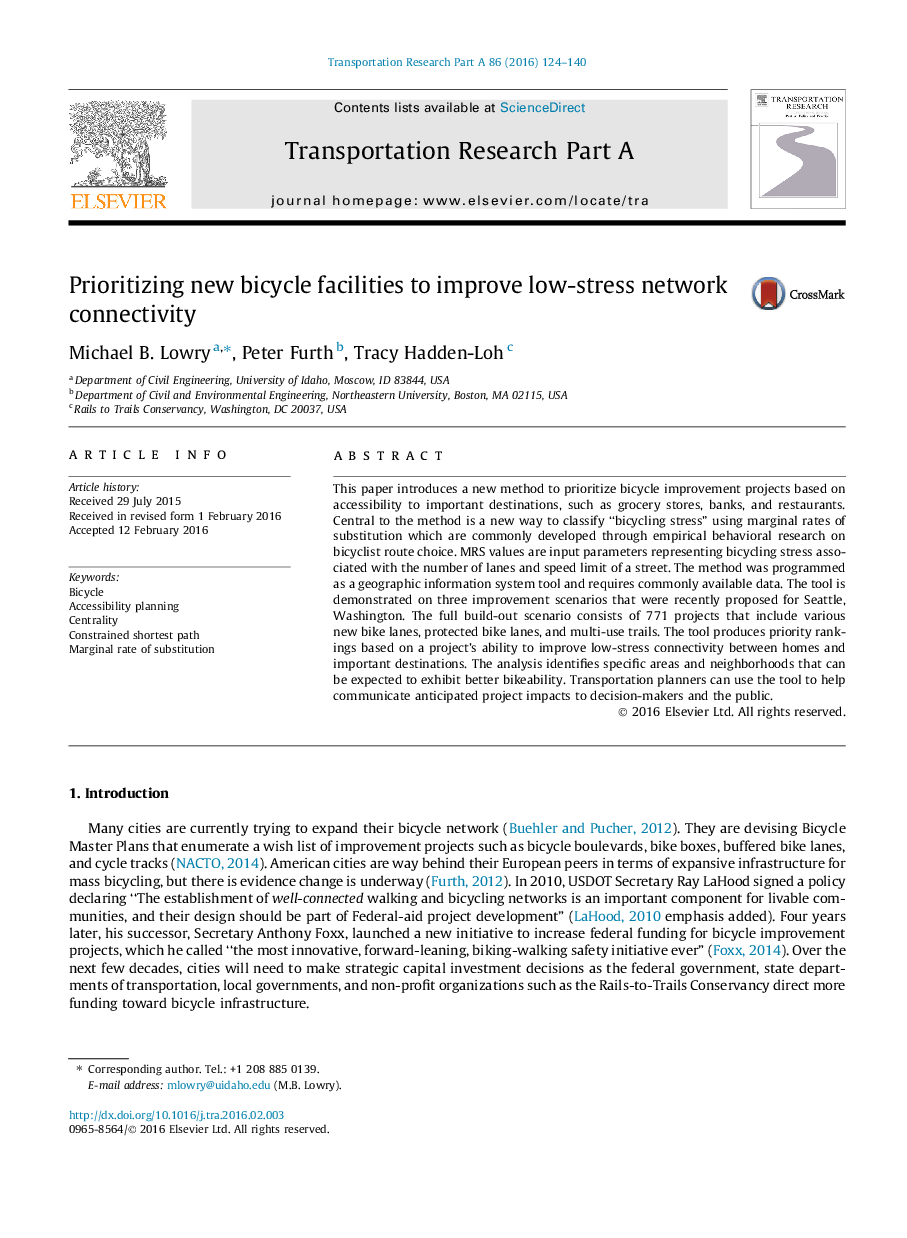| Article ID | Journal | Published Year | Pages | File Type |
|---|---|---|---|---|
| 6780958 | Transportation Research Part A: Policy and Practice | 2016 | 17 Pages |
Abstract
This paper introduces a new method to prioritize bicycle improvement projects based on accessibility to important destinations, such as grocery stores, banks, and restaurants. Central to the method is a new way to classify “bicycling stress” using marginal rates of substitution which are commonly developed through empirical behavioral research on bicyclist route choice. MRS values are input parameters representing bicycling stress associated with the number of lanes and speed limit of a street. The method was programmed as a geographic information system tool and requires commonly available data. The tool is demonstrated on three improvement scenarios that were recently proposed for Seattle, Washington. The full build-out scenario consists of 771 projects that include various new bike lanes, protected bike lanes, and multi-use trails. The tool produces priority rankings based on a project's ability to improve low-stress connectivity between homes and important destinations. The analysis identifies specific areas and neighborhoods that can be expected to exhibit better bikeability. Transportation planners can use the tool to help communicate anticipated project impacts to decision-makers and the public.
Keywords
Related Topics
Physical Sciences and Engineering
Engineering
Civil and Structural Engineering
Authors
Michael B. Lowry, Peter Furth, Tracy Hadden-Loh,
